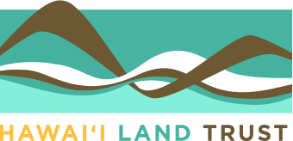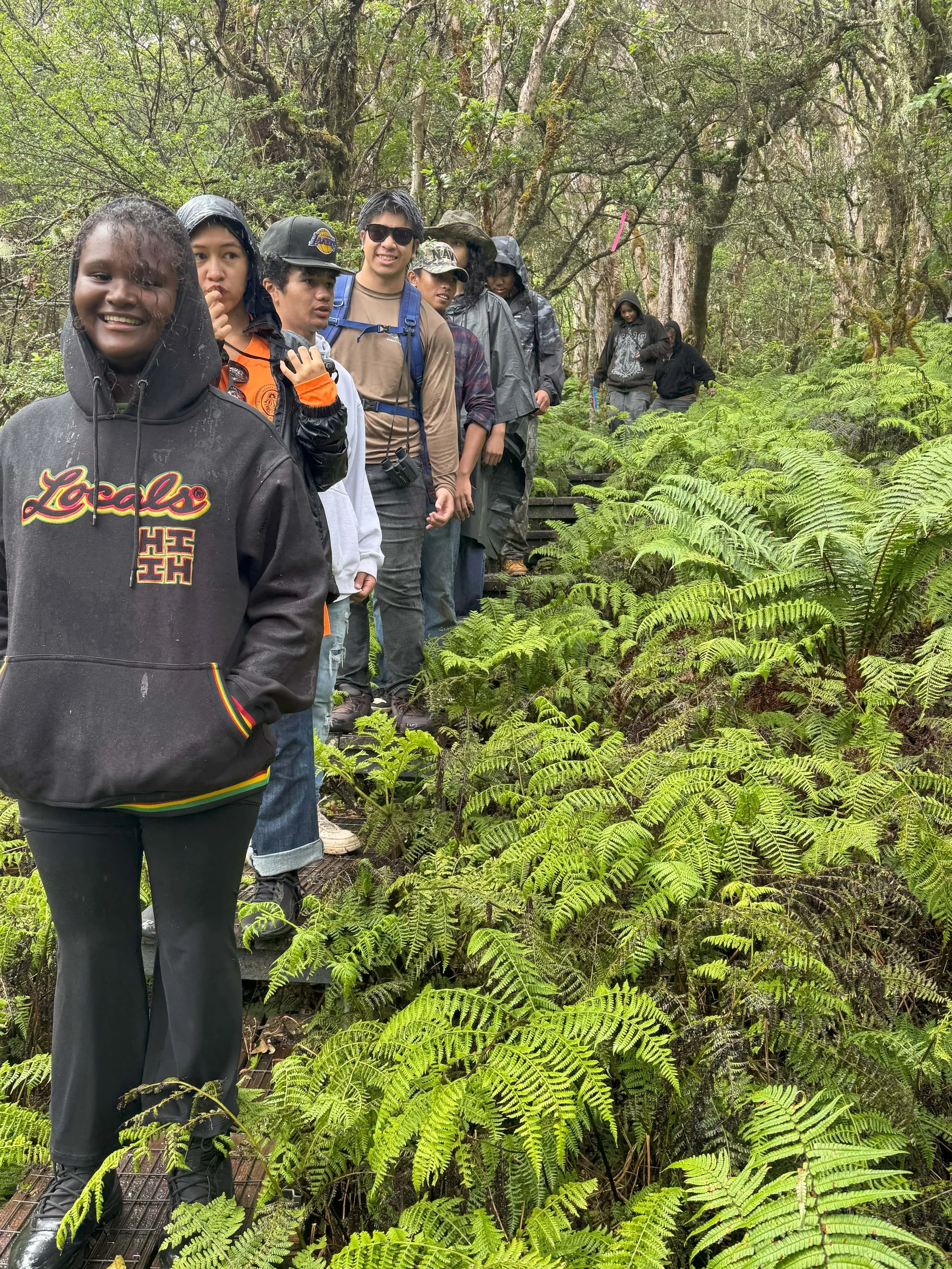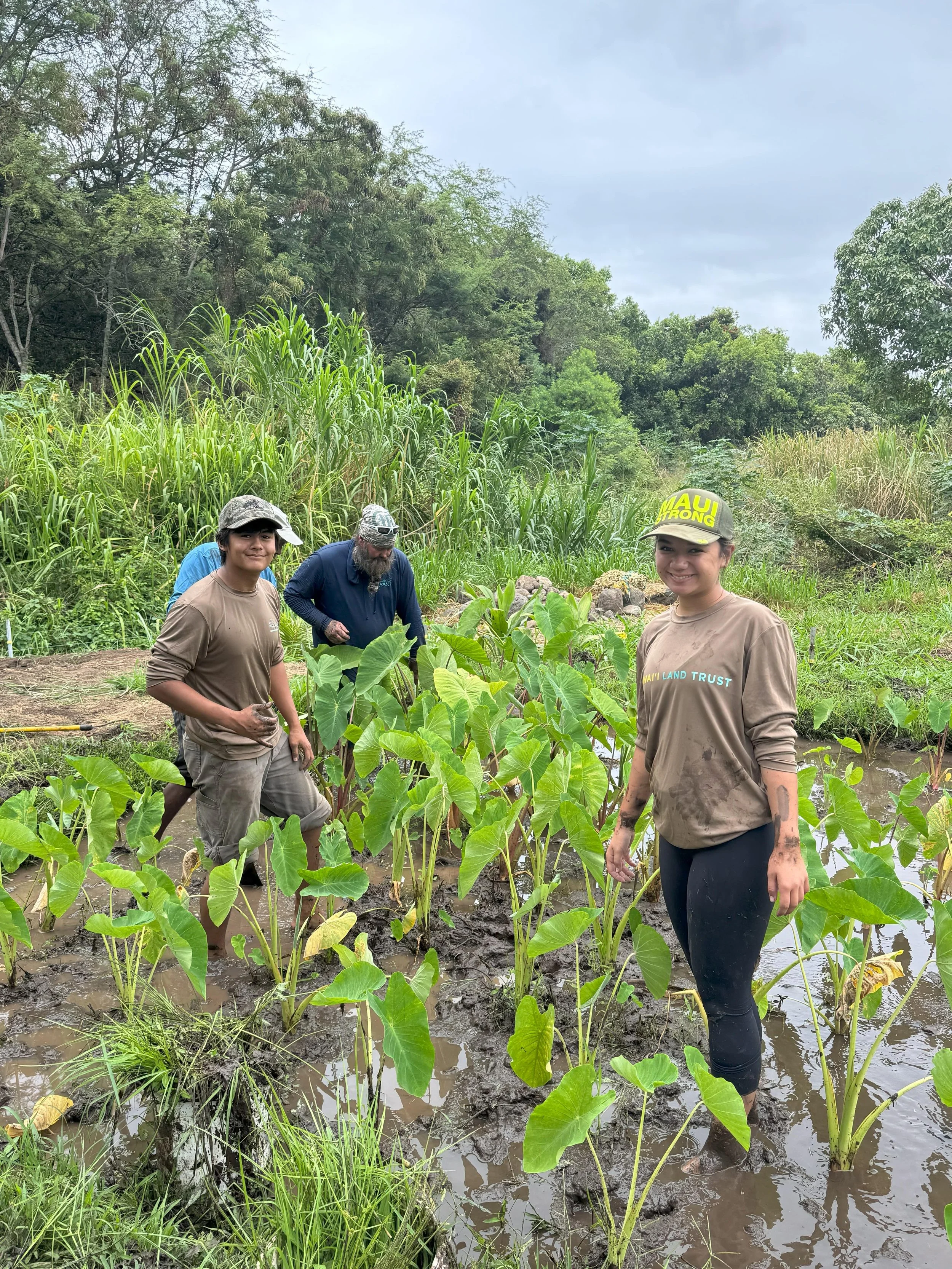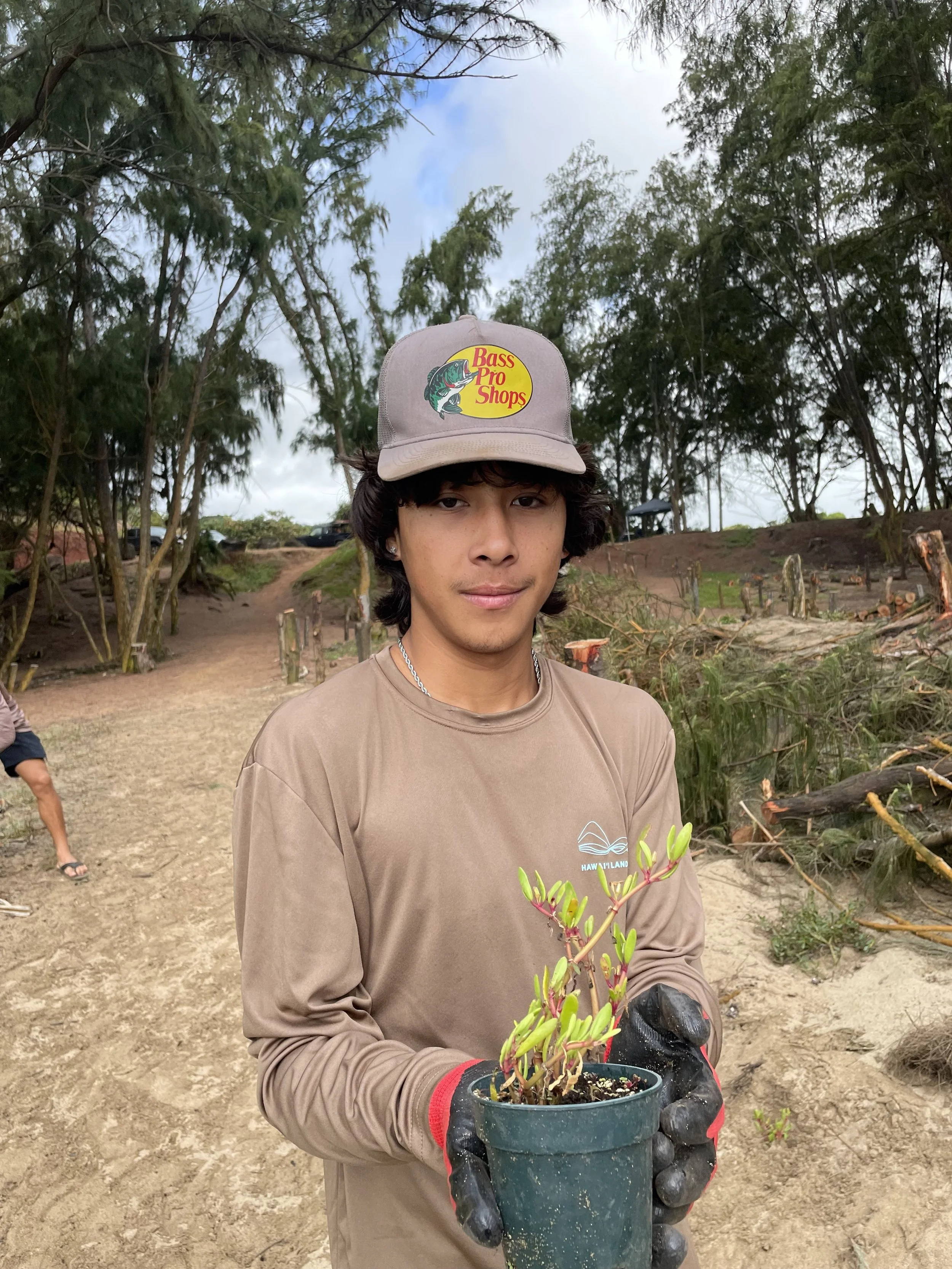The Future of Aloha ʻĀina
Through their passion and deep commitment to protecting and stewarding the lands that sustain us, they are fulfilling their kuleana and protecting the future of our island home. We couldn’t be prouder of these young people, and we know you will enjoy reading about them as much as we have loved meeting and working with them.
Olivia Robinson with her Ahupuaʻa Stewards Leadership Program peers at Waikamoi Preserve.
Birds, Balance & Big Plans
Olivia Robinson, Ahupuaʻa Stewards Leadership Program, Maui
Olivia Robinson grew up on Maui, but she hadn’t often thought deeply about the interconnectedness of the natural world on her island home. A summer 2025 internship with HILT’s Ahupua’a Stewards Leadership Program at the Waihe’e Valley opened her eyes to those ties.
“We got to look at these birds, and it helped me realize that bird poop is actually a really, really important part of our ecosystem. The birds eat the fish, and then they poop up in the mountains, and that’s the nutrients that a lot of our mountains live off, and I was kind of like, ‘Oh, ew. I didn’t realize that,’” she said, laughing.
Olivia’s favorite part of her summer was viewing said avians in the bird sanctuary. Along with her fellow interns, she carefully threaded tiny cameras on wires into the tunnels where they nest to count how many were living in the underground homes and note if the numbers had grown since the beginning of the summer.
Keeping the winged creatures safe is a delicate balancing act, Olivia said. They have lost some of their habitat due to development, and residents and tourists inadvertently step on and collapse their nests.
“We got to clear the space so they could dig them back out,” she said. “We can’t do it for them, but we just help them a little bit.”
Through the internship, Olivia also happily discovered that she doesn’t need an advanced degree to pursue a career in conversation. Once she finishes her senior year at Maui High School, she hopes to attend the University of California, Davis for Wildlife, Fish, and Conservation Biology, then return to Maui to work.
Anais Conely-Kapoi with her Hoʻoholo I Mua peers at Makaʻaka Loʻi Kalo at Waiheʻe Refuge.
Rooted in Culture, Growing Toward the Future
Anais Conely-Kapoi, Hoʻoholo I Mua, Maui
Anais Conley-Kapoi was standing by a river with the four other participants of Hawai‘i Land Trust’s Ho’oholo I Mua program, jeans rolled up, preparing to wash the kalo that they had recently harvested, when she was struck by the significance of the moment.
“Only then did I realize, ‘Wow. We are truly blessed to know parts of our culture and [to have] organizations like HILT to put together the internship and bring together kids and also pair them with adults who can share their mindsets and their ideals,’” said Anais, who is native Hawaiian.
Throughout the program, Anais was also deeply affected by the camaraderie of those she met through HILT, built on their mutual love of ʻāina, regardless of their background.
Anais, a graduate of Kamehameha Schools Maui, grew up on Maui, often accompanying her archaeologist mother to work. In 2023, she parlayed her interest in field work into conservation, participating in the Maui Ahupuaʻa Stewards Leadership Program. Two years later, when HILT invited her to participate in the new Ho’oholo I Mua program, she jumped at the chance.
With Ho’oholo I Mua, Anais has worked mostly at Waihe’e Coastal Dunes and Wetlands Refuge, clearing out invasive plants, propagating new native plants, and replanting and harvesting kalo in the loʻi.
On a recent community workday, she met an older gentleman who had attended Columbia University. At the time, she was preparing to start her freshman year there.
“I was able to talk to him not only about Columbia, but about Hawai‘i Land Trust and how he got involved,” Anais said.
What has stayed with her most from her second summer with HILT is the importance of community and collaboration.
“All these people come from different areas and have different life experiences, but their reasons for coming to work with Hawai‘i Land Trust, even for the community workdays, have just been so similar,” she said. “It’s wanting to help the land, wanting to connect with the people, and wanting to restore these areas.”
In college, Anais hopes to study anthropology and possibly minor in environmental science. Eventually, she plans to return to Maui to work and raise a family.
Bunny (second from right) with her Maunawila ʻŌpio peers at Makaʻaka Loʻi Kalo at Waiheʻe Refuge.
Knee-Deep in Aloha ʻĀina
Tahaʻea “Bunny” Casey, Maunawila ʻŌpio, Maunawila Heiau Complex, Hauʻula, Oʻahu
Tahaʻea “Bunny” Casey, a participant in HILT’s Maunawila ʻŌpio Summer program, spent a portion of her summer knee-deep in the Huilua fishpond.
Dressed in reef shoes and gloves, she could feel the change beneath her feet—signs of gorilla ogo, the invasive seaweed she and her fellow ʻŌpio were tasked with removing. Like pulling weeds from a garden, Bunny learned that no part of the non-native ocean vegetation could remain.
“It always grew in a bushy kind of way, and when you would pick it up, it would be attached to a rock,” she said. “It grows back if you just pull and leave even a small piece of it on the rock.”
Bunny grew up nearby and attended Hauʻula Elementary School, where teachers and HILT staff use Maunawila as a classroom. Now that the outdoor-loving teen is old enough, the ʻŌpio program at the location was a natural fit.
As they worked their way around the pond, Bunny and the other ʻŌpio held large buckets to collect the harmful limu, which they would then dry and use the nitrogen-rich plant for fertilizer.
Among the many other activities, Bunny cleared vegetation from the Maunawila architectural site and helped to restore the fishpond in Kahana.
“It’s down by the waves, so humans step on it where they’re not supposed to,” she explained. “Certain fishponds are made flat so people can walk on them and fish from the edge, but this certain one was not made for that. It was made to fish only by the sand or in certain spots.”
Bunny also crafted traditional Hawaiian fishing lures using collected cowry shells, rocks, and cow bone, which she used to fish for octopus at Hauʻula Beach Park.
“You have that stick dragging across the bottom of the sea floor, trying to look for an octopus pretty much when you feel it,” she said. “And then you could just pull it straight out of the water.”
The entire experience was rewarding, but Bunny also reveled in some well-earned leisure time on a trip to Maui during the final week of the program.
“We really had the intention of just bonding together,” she said. “And we did a lot of ocean activities like diving, swimming, jumping off rocks. So that’s what made it fun — just spending time with everyone.”
Keaka Kauhane planting akulikuli at Kāhili Beach Preserve.
Braiding Limu, Building Stewardship
Keaka Kauhane, Kāhili Beach Preserve, Kīlauea, Kauaʻi
As a Kāhili Beach Preserve summer intern, Keaka Kauhane learned to craft a lei by braiding limu onto a piece of string—but unlike most leis, this one was never meant to be worn.
Instead, he tied it to a rock, walked out into the ocean, and placed it on a piece of coral.
Nalani Kaneakua, a guest speaker and director of the Hosea Lovell Foundation, explained to Keaka and his fellow interns that the limu would spread and improve the health of the reef. “Without limu and healthy reefs, we would have less oxygen,” Keaka said. “Seaweed also produces oxygen, and it is what feeds all the sea life, too.”
Keaka, a 2024 Kapaʻa High School graduate and Pacific University student, also discovered how people’s actions on the beach – such as driving on the sand – can harm the fragile reef, as oil and gas can seep into the ocean.
Keaka’s family cultivates native plants at their greenhouse on Kauaʻi, so he has an affinity for the island’s flora. During the internship, he helped build an irrigation system on a local farm to hydrate the mango and orange trees. He hopes to do so on his own land one day. “The land is what feeds us, so we’ve got to take care of the land,” Keaka said.




